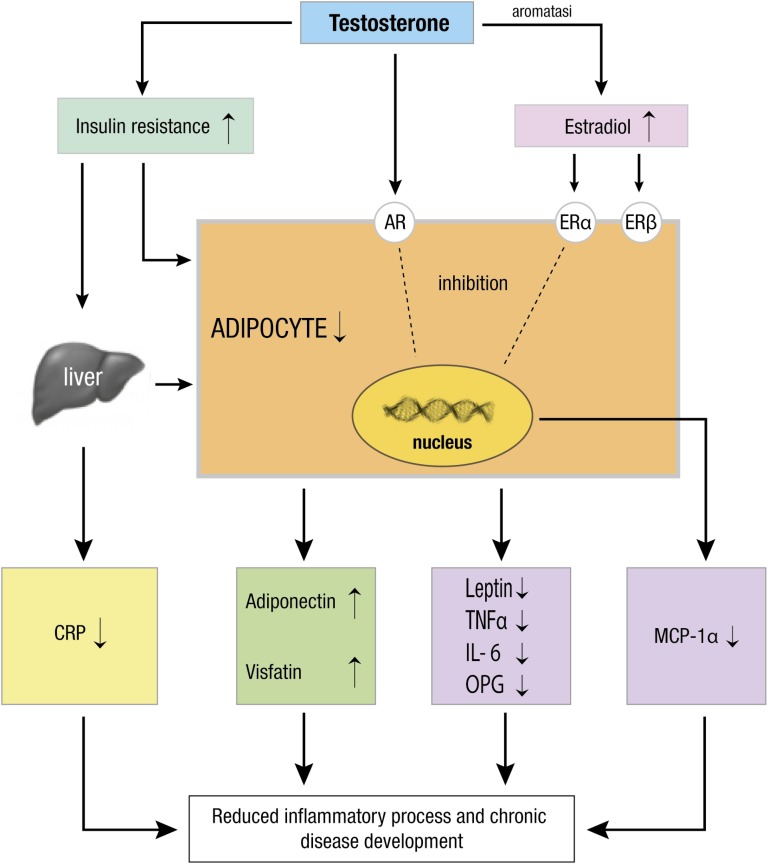Figure 1.
T exerts its anti-inflammatory activity through different mechanisms. Firstly, T inhibits body fat expansion and reduces adipocytes size and metabolism. After its aromatization in estradiol, T can activate AR and ERα and ERβ, which contribute to adipocytes regulation decreasing the release of adipokines (leptin, IL-6, TNF-α, OPG, MCP-1α) and improving adiponectin and visfatin production, which possess an anti-inflammatory effect. Furthermore, T improves insulin activity and reduces the CRP from the liver. Altogether, it results in a reduction of inflammation and development of chronic disease.

